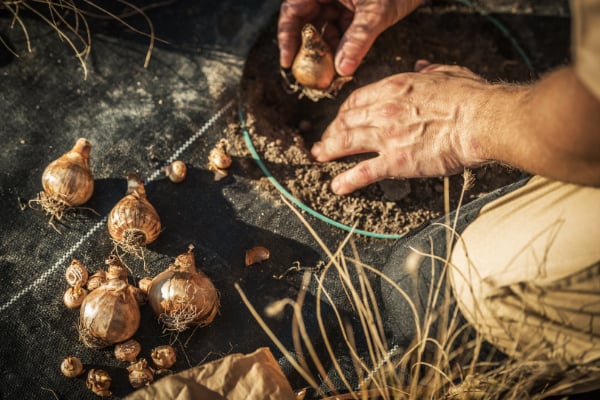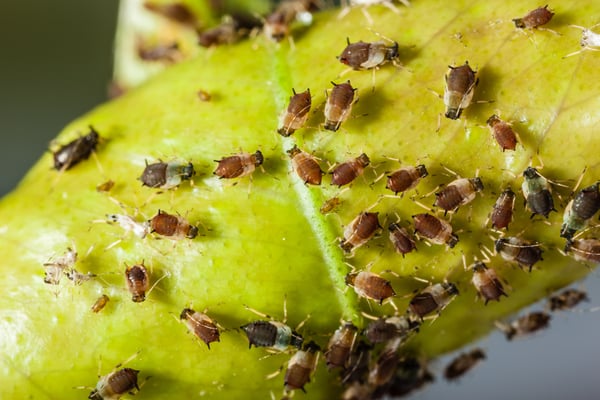Roses Diseases
Roses are the beautiful bloom in your yard which can serve as an elegant addition for those seeking to add a touch of class and colour to their garden. While the beauty of roses is timeless, there can be a lot of work involved to maintain them.

To help your roses bloom to their full potential you need to take extra care to ensure that you properly prune your roses and take the appropriate steps to protect them from disease. Unfortunately, without correct disease control your roses can be subject to black spots, powdery mildew, and rust.
Roses and rose care
While pruning may seem important for the cosmetic appearance of your roses, pruning is absolutely necessary to reduce rose diseases. Rose stems and leaves can become the ultimate carrier of disease and pests which will ruin your rose bush.
The four steps to proper rose care involve positioning, fertilising, watering and pruning.
Planting
The first step to preventing disease is by planting your roses in the correct location within your garden. Roses need full sun and cannot be crowded against walls or other plants. Allowing space makes it easier for air and sunlight to circulate throughout the plant. The risk of fungal growth increases if your roses are cramped and there is little space for sunlight or airflow.

Fertilisation
In order for your roses to bloom an impressive show of flowers, your rose bush needs nutrients to stay healthy. Regular fertilisation provides a slow and steady supply of nutrients for the roots of your rose to absorb.
Watering
Keep your soil evenly moist throughout the growing season. This is particularly important in Australia where the climate can get very hot.

Ideally you want to give your roses the equivalent of one inch of rainfall per week while it is in the growing season. Too much moisture on rose leaves can result in disease, so always aim to water the soil rather than the foliage.
Prune
If there are stems in your rose bush that are dead or if there are leaves that are carrying black spots, it is important to prune these. By removing the diseased parts of the plant, it is easier to prevent the diseases from spreading to the rest of your roses. Our step-by-step guide breaks down the most effective way to prune your rose bush.

If your roses do happen to become infected with disease, the foliage is usually the first place you will see any problems. Symptoms of disease in rose leaves start if your leaves are yellowing, have black or white spots, discolouration, and rust-coloured coating. Leaves will also wilt and prematurely fall off, preventing the plant from being able to photosynthesise.
Different types of diseases
There are a variety of diseases that can harm your rose. These include fungal infections that cause discolouration or unsightly spots all over your foliage, pests which feed on your blooms and leaves, and nutrition deficiencies.
Learning how to detect and treat these diseases early in their steps can prevent them from spreading to the rest of your rose plant.
Fungal
There are a variety of fungal issues which can harm rose bushes. Some of these breed when the foliage is damp, or when there is high humidity. Others are from spores spread by wind and water-splash.
Black Spots
The most common disease a rose can get is ‘black spots’. Caused by the fungus Diplocarpon rosae, this infection leads to the formation of black spots on the stems and leaves of rose plants. Leaves which have been affected by black spots will also turn yellow and prematurely fall.
It is recommended that you remove and destroy all diseased leaves and stems to help free your rose bush from infection and limit the spread. You will need to spray the bushes when new growth occurs. If you would rather use an organic spray then consider potassium bicarbonate.
Powdery Mildew
Have you ever touched a rose and felt a powdery substance between your fingers? This sensation was most likely caused by the fungus Sphaerotheca pannosa which causes the rose disease known as ‘powdery mildew’. New growth is particularly susceptible to this kind of fungus. It is often detected by a pale grey powdery coating on the leaves, stems or flower buds. Eventually, the edges of the leaves may curl inwards and the buds may deform.
Similarly to black spots, remove all parts of the foliage that appear to have the powdery mildew and dispose of these away from your other plants.
Rust
Rose rust is a frustrating condition for gardeners as not only does it wreck the appearance of roses, but they will also kill the plant if left untreated. Rose rust, caused by Phragmidium fungus, appears as rust-coloured spots on the leaves that will grow bigger as the infection advances. Rose rust can cause stems to blacken, leaves to wilt and prematurely fall, and the affected rose bush to defoliate.
Keep an eye out for any orange or rust-coloured spots on your rose bush as the infected sections will need to be removed promptly.
Nutrient
Just like us gardeners, roses can suffer from nutrient deficiencies too!
Nitrogen is an essential nutrient for roses to grow, and a deficiency in this nutrient can lead to chlorosis (a yellowing of the leaves) and cause leaves to drop. While nitrogen is found in soil, many soils only have this nutrient in low concentrations so it is extremely beneficial to fertilise the soil beneath roses.
Roses can also experience micronutrient deficiencies. If soil is too wet, is too alkaline, or sandy it can be hard for iron and zinc to form. Chelated forms of iron and zinc are available to be applied either to foliage or soil to prevent interveinal chlorosis.
Pests
There are a variety of pests that can live on your roses. One of these species are ‘aphids’. Aphids are green but can also appear in brown, red and black. Aphids are usually managed if their predators are nearby – one of them being ladybird larvae.

If your rose leaves are pale, smeared with spots, bronzed, or shriveled, then two-spotted mites could be the culprit. To check for two-spotted mites, check the underside of the leaves. The mites are usually visible and the leaves will look dusty with webs. These mites multiply in hot, dry conditions so be sure to keep your soil watered to slow breeding. Mites can be left alone to natural predators, which means you will only need to consider using a spray if your mite problem is severe.
There are also two sap-sucking insects to watch out for. Scale commonly attack the older and lower stems of a rose bush. If the infestation is severe the foliage will become covered by a sooty black mould. Then there are thrips which are tiny and spread plant viruses. Thrips will lay eggs in the plant, so any infected parts will need to be removed and placed in the bin, not compost.
From pesky pests to frustrating fungi, there are a variety of threats that can keep your roses from looking proper. Garden express has all your rose-caring essentials to ensure your roses are pruned and healthy.







Comments are closed.